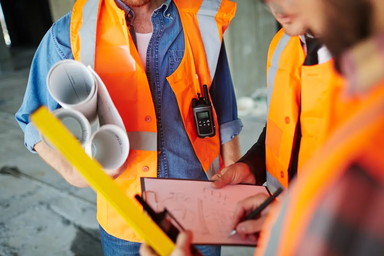What is Safety and Compliance? A Comprehensive Beginner's Guide
Safety and compliance often go hand in hand when discussing workplace standards and procedures, especially in industries like engineering and construction. Some compare their relationship to peanut butter and jam, recognising they are closely linked. Yet, there is frequent debate about which is more valuable. Is it better to focus on meeting legal minimum requirements, or to build a proactive environment where safety is firmly ingrained in everyday actions?
In reality, both compliance-based and safety-based approaches have undeniable merits. Employers who follow only the bare minimum can still avoid legal issues and demonstrate a degree of responsibility. Others prefer going above regulatory standards by embedding robust practices into their organisational culture. Whichever path is chosen, it helps to remember that minimal effort will never fully protect workers, nor will ignoring compliance simply because a company believes it runs safe projects. True success comes from striking a balance one that may also help you stand out when clients evaluate potential partners.
Below, we explore how compliance and safety work together, why they matter, and how engineering-focused companies can measure and maintain a culture that safeguards their people and their reputation. This guide also provides insights into DataSolarCX’s expertise in managing compliance and championing safer processes within complex and large-scale projects.

What Is Safety and Compliance?
Safety compliance means aligning everyday operational practices with official requirements, guidelines, and regulations set by authorities. These can include rules from the Health and Safety Executive (HSE) or other relevant local or industry-specific bodies. Compliance serves as a baseline, ensuring at least the foundational protocols are met.
However, businesses must also ask whether standard regulations fully address their unique conditions. Government mandates, for instance, usually tackle general hazards rather than every possible site-specific risk. Therefore, employers often create additional measures, policies, procedures, and on-site protocols to fill the gaps between generic regulations and actual hazards found in their workplaces.
Ensuring all employees understand these protocols is critical. Even the most effective set of policies can fail if staff are unaware of the rules or lack the tools and training to follow them.
Why Safety and Compliance Are Critical
Safety and compliance matter for numerous reasons, beginning with risk reduction. Serious accidents cause both physical harm to workers and considerable legal and financial challenges for employers. Falling short of mandated requirements can lead to penalties, reputational damage, and even project shutdowns.
Furthermore, a strong safety record often translates into higher confidence from clients, suppliers, and insurers. It can help attract new customers who view rigorous safety as a sign of professionalism. Indeed, some companies report a dip in their insurance premiums once they show proof of a proactive safety culture.
Employee morale is another consideration. Workers who feel protected are more willing to engage with processes and perform at a high level. Conversely, a casual approach to safety can undermine trust and contribute to high staff turnover.
Key Elements of a Safety and Compliance Programme
Building a safety and compliance culture involves several fundamental components:
- Clear Policies and Procedures
Written guidelines let teams know exactly what is expected. For instance, DataSolarCX emphasises on-site protocols and Safe Systems of Work (SSOW) to make safety a clear priority from project inception. By combining regulatory requirements with site-specific documentation, companies can align both official mandates and local realities. - Regular Training and Certification
Continuous training keeps knowledge fresh. This is especially important in fields like high-voltage commissioning or data centre infrastructure, where best practices evolve. Having authorised, well-trained personnel reduces the risk of accidental misuse of equipment and fosters accountability within teams. - Monitoring and Enforcement
Routine inspections, audits, and updated checklists confirm adherence to safety rules. DataSolarCX often includes comprehensive commissioning reviews, detailed documentation, and frequent check-ins during the project lifecycle. These measures allow for immediate adjustments if lapses are identified. - Incident Reporting and Response
Promoting an environment where workers feel comfortable reporting near misses or dangers ensures issues are addressed proactively. Companies should also define clear protocols for investigation and follow-up, ensuring similar incidents do not recur.

What Are the Safety and Compliance Standards?
Safety and compliance standards vary from place to place, but generally revolve around legal mandates. In Britain, the HSE creates guidelines that most employers must meet. Depending on a project’s scope and industry, additional rules may apply. For instance, construction sites have their own set of regulations, covering everything from working at heights to the use of personal protective equipment.
Internationally, bodies like the International Organisation for Standardisation (ISO) produce standards that can help unify safety approaches across countries. Yet these regulations often represent a “bare minimum.” As the user-provided information suggests, they rarely account for niche or unusual hazards. The best organisations extend beyond such requirements to form tailored safety programs unique to their operation.
How to Measure Safety Compliance?
Measuring safety compliance calls for tangible data. Audits and inspections play a vital role, allowing companies to verify if staff consistently follow procedures. Clear evidence of proper training, valid certifications, and usage logs for safety gear are also telling indicators. Additionally, performance metrics such as near-miss reports, lost-time incidents, or risk identification frequency can show whether issues are diminishing over time.
Some businesses rely on digital dashboards that track compliance checkpoints in real-time. Others prefer paper-based documentation for smaller teams. Regardless of the method, the key is consistency. Regularly reviewing data helps managers decide if their safety strategy needs adjusting or if certain teams require further training.
Safety and Compliance in Engineering Projects
Engineering projects can be particularly complex, due to high-voltage environments, large-scale equipment, and tight deadlines. A single misstep can have severe implications for both workers and the public. Organisations such as DataSolarCX specialise in guiding clients through these complexities by offering:
- Hyperscale Data Centre Commissioning: Verifying that all facilities, from power distribution units to ventilation, are installed and tested according to specific safety standards.
- Rail and Underground Compliance: Coordinating technical requirements within complex transit systems where millions of passengers depend on safe daily operations.
- Power Grid Projects: Conducting commissioning services across large geographical areas, ensuring teams understand how to handle high-voltage systems under dynamic conditions.
By introducing clarity at each project phase, planning, execution, and handover - these initiatives mitigate risk and ensure consistent compliance.
Challenges In Maintaining Safety and Compliance
Maintaining safety and compliance presents its own problems. Complex regulations may overlap or evolve, causing confusion if not managed properly. Swift technological changes can outpace established procedures, leaving employees unsure how to handle new systems safely. Also, many organisations juggle limited budgets or staff resources, making it difficult to sustain robust programmes over time.
Even so, ignoring these challenges is rarely cost-effective. The fallout from a single accident or compliance breach can be expensive, both financially and in terms of reputation. Proactive planning, clear leadership commitments, and well-structured management systems help overcome hurdles that might otherwise lead to complacency or oversight.
Useful Steps for Improving Safety and Compliance
- Conduct Thorough Risk Assessments
Identify significant hazards and propose strategies for eliminating or reducing them. This ties well with a risk management system, ensuring potential issues are discovered early. - Implement Continuous Training
Offer regular refresher courses for all levels of staff, focusing on both core standards and role-specific tasks. DataSolarCX often tailors training solutions to address particular site challenges or technologies. - Utilise Technology
From digital checklists to real-time dashboards, technology streamlines reporting. Quick reference tools let workers document their activities easily and consistently, feeding accurate data back to leadership. - Maintain Clear Communication
Encourage open dialogue about any concerns, barriers, or improvements. Teams will respect processes they help shape, and thorough feedback often leads to more efficient, user-friendly policies. - Develop a Culture of Commitment
Emphasise accountability at every level, starting with senior management. By allocating sufficient resources, senior leaders demonstrate safety is just as crucial as cost efficiencies or production targets.
Take the Next Step Towards a Safer Workplace
Compliance with official rules is vital for meeting legal requirements and avoiding penalties. However, a safer, more productive workplace arises when you go further, assessing unique risks, engaging employees, and embedding good practices into everyday operations. Investing in these areas fosters a healthy culture where staff feel valued and customers see a dependable partner.
For organisations eager to refine their safety and compliance measures, Data Solar CX offers a practical approach. Drawing on extensive commissioning experience in data centres, power grids, and beyond, the team is ready to deliver tailored solutions and specialised safety training. If you are looking to strengthen your compliance framework or explore how a risk-based mindset could elevate your project outcomes, consider getting in touch with DataSolarCX to discuss where to start.